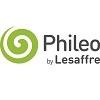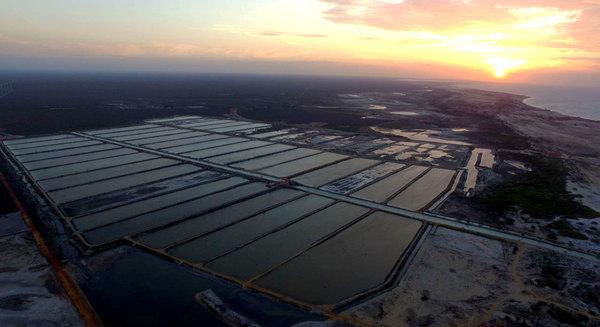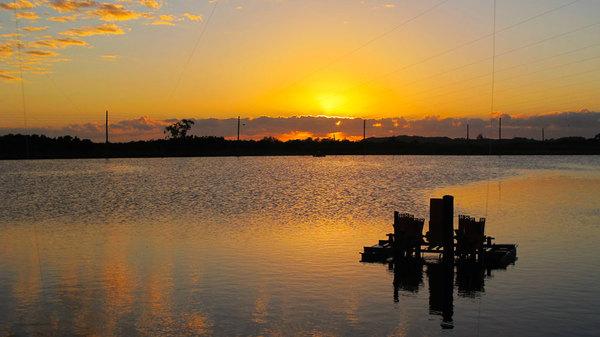
Content sponsored by:
Phileo by Lesaffre
Preventive measures in aquaculture: How to better protect our crops
Published: August 21, 2018
By: Marcelo BORBA

Pathogenic agents that cause economic impacts in aquaculture are from bacterial, viral, fungal and/or parasitic origin. In fact, the combination of one or more of these pathogens is the most common cause of disease outbreak and can increase disease dispersion among shrimp and fish.
Diseases in aquaculture have been causing adverse economic and social impacts worldwide, leading to significant losses that affect most of the stakeholders in the industry. As an example, we might remember that the Global Aquaculture Alliance’s Annual Survey (GOAL 2017) held in Ireland, listed Diseases as a top challenge for the shrimp industry, representing the main bottleneck and limiting factor to Aquaculture development worldwide.
According to Lightner et al. (2012), the economic losses caused by the White Spot Syndrome Virus (WSSV) until that year had been estimated at US$ 15 billion. In 1999 in Ecuador, the losses may have reached the impressive amount of $ 2 billion. The same article estimates losses around 100 to US$ 200 million due to Infectious Myonecrosis Virus (IMNV) in the Americas (Brazil) and around US$ 1 billion in Southeast Asia (Indonesia) in 2006.
Recently, the industry experienced the Early Mortality Syndrome (EMS), the world’s most devastating shrimp farming disease. This disease is caused by a mutant Vibrio parahaemolyticus strain and caused losses in the order of billions of dollars per year. EMS, that was reported in Southeast Asia, has spread throughout the APAC region, reaching later Ecuador and Mexico, the first and second largest farmed shrimp producing countries in the Americas, respectively (Zorriehzahra et al., 2015).
The important role of prevention
Shrimp and fish become ill and die from diseases when they are exposed to pathogens in an aggressive way, in which their natural defenses, potentially already weakened by intensive rearing conditions and/or abrupt changes in environmental factors, are not able to cope with the aggressiveness of this exposure.
The adoption of standards like the Global Aquaculture Alliance (GAA) Best Aquaculture Practices (BAP) is the main key to maintaining a more balanced and safe environment for the aquatic animals in productive systems. Despite their importance, BAP are many times “forgotten” or down-prioritized to a second or a third plan. Even when they are applied, in some cases their effects are not so efficiently measured, leading aquaculturists to doubt about their effectiveness.
It’s a known fact that in Brazil, for instance, as well as in many other countries, fish and shrimp are still cultured in a reactive way in terms of their immunity and health protection. This means that it is much more common to see aqua farmers trying to cure diseases after they have emerged and spread the pathogens into the cultured environment, rather than adopting some systematic measures aiming at preventing disease outbreaks. However, prophylactic actions exist to prevent or reduce the risk and the level of transmission of a disease, protecting the populations from its occurrence or evolution.
The Brazilian Shrimp Farmers Association (ABCC) highly recommends a series of measures to avoid disease’s dissemination. One of them is the systematic and continuous use of probiotics and paraprobiotics. We will now discuss a little more about these.
 Credits: Maurício Emerenciano
Credits: Maurício EmerencianoProbiotics and paraprobiotics
The use of probiotics in Brazil dates back to the year 2000 and their use has been significantly growing due to the efficiency and proven benefits so far, mainly restricted to ponds’ bioremediation and water treatment. The common use of these live bacteria helps to promote a more efficient mineralization of the organic matter, and thus a better balance of the physico-chemical and hydrobiological parameters of the water.
Nowadays, besides their proven benefits for treating pond bottoms and helping to maintain water quality at acceptable levels, there is a consensus that probiotics (bacteria and yeast) can also promote the competitive exclusion of harmful bacteria in animal bodies, especially in the gut. Unfortunately, probiotics bacteria alone are not always able to prevent (neither treat) disease outbreaks.
Hence, the aquaculture industry has started paraprobiotics utilization. They are prophylactic effective compounds with accessible and easy industrial feed application, cost-effective, but still incomprehensible is the low adoption of this technology in Brazil and other countries. Such solutions are still in the process of implementation and dissemination among aquaculture farmers.
Fortunately, there are already successful cases with the use of yeast cell wall paraprobiotics in highly productive commercial aqua farms. These could serve as an incentive and reference for many other fish and shrimp producers who often are not sure about what paraprobiotics are, how they act and how to use them.
Intestinal bacteria pathogens cause damage to the host by binding and colonizing the intestinal epithelium and even sometimes crossing the intestinal barrier and spreading to inner organs and tissues. Paraprobiotics, such as yeast cell wall, contain complex carbohydrate molecules that interfere directly with the binding ability of pathogenic bacteria in the gut, thereby reducing the ability of pathogen bacteria to bind to the intestinal epithelium of the animals.
One of these complex carbohydrates is mannan oligosaccharides, also known as MOS. MOS are non-digestible carbohydrates that when in transit into the intestinal lumen, can bind bacteria due to their strong affinity for lectins (molecules present on the outside of the plasmatic membrane of Gram-negative bacteria cells). Mannans binding to these compounds (lectins) lead to the neutralization of the harmful bacteria and with their subsequent excretion through the feces, thereby decreasing harmful bacteria concentration in the host’s body.
Another complex carbohydrate found in the yeast cell walls are β-glucans(1,3;1,6), which present a distinct mode of action generating other benefits. Once “sensed” by the gastrointestinal tract of the fish or shrimp, they are identified as a “warning signal”, allowing the activation of macrophages. Macrophages are highly specialized cells of the immune system that possess the ability to ‘eat” microorganisms such as bacteria (phenomena called phagocytosis). After phagocytosis, the pathogen is trapped within the macrophage in a structure called phagosome. The phagosome fuses with a vacuole containing enzymes and peroxides to help digest the pathogen.
In addition to phagocytosis, macrophages are of great importance for immunomodulation, producing and secreting a large number of molecules named chemokines, that attract other defense cells to specific sites where inflammatory processes are occurring.
Paraprobiotics, therefore, have synergistic effects with probiotics. Probiotic bacteria and yeast promote beneficial effects on animal’s gut health, competing with pathogenic bacteria for nutrients and oxygen, for adhesion sites on intestinal epithelium, and producing antimicrobial substances. On the other hand, paraprobiotics, can be understood as “traps” to capture, inactivate and eliminate, in an effective way the harmful bacteria in the gut, thus opening space for a better and more effective colonization of the digestive tract of fish and shrimp by beneficial microorganisms.
A quick Google Scholar search for “immunity in aquaculture” returned 332,000 results in 8 seconds, whereas “Functional feeds in aquaculture” returned 41,000 results in 4 seconds and “prebiotics in aquaculture” returned 16,500 results in 5 seconds. Disregarding the specific content of these papers, it is worth to mention the fact that a lot of information has already been generated by researchers and technical professionals, demonstrating improvement in fish and shrimp immunity and resistance. The applications of the solutions described above have proven their efficiency both in vitro and in vivo trials, as well as in farm conditions and in commercial production sites.
Conclusions
In a very simple and easy way, we can understand paraprobiotics as an “insurance”, targeting shrimp and fish protection to minimize risks, promoting a better immune status and, consequently, a greater resistance to diseases.
The combined use of probiotic bacteria, probiotic yeast and paraprobiotics (yeast cell wall) is the more reasonable and effective way to promote the modulation of shrimp and fish immune systems and prevent diseases that could lead to severe losses.
In this small and informative article, we learned a little bit more about which are the functionalities of yeast cell wall paraprobiotics, the way they act and their synergistic effects with probiotics. Additionally, paraprobiotics produced by yeast cell wall can have synergistic effects with vaccines (in the case of fishes) and antimicrobial agents, as an effective adjuvant in some therapies.
It is now up to you, fish and shrimp farmer and feed suppliers to assess the feasibility of using probiotics and paraprobiotics throughout the whole production cycle.
 Credits: Maurício Emerenciano
Credits: Maurício EmerencianoAdaptation of an article originally published in Aquaculture Brasil Magazine, issue March/April 2018.
Article written with the help of Nadege Richard and Otavio Castro.
Article written with the help of Nadege Richard and Otavio Castro.
Related topics:
Authors:
Phileo by Lesaffre
Influencers who recommended :
Clara BergerRecommend
Comment
Share
Recommend
Reply
Recommend
Reply

Would you like to discuss another topic? Create a new post to engage with experts in the community.



.jpg&w=3840&q=75)